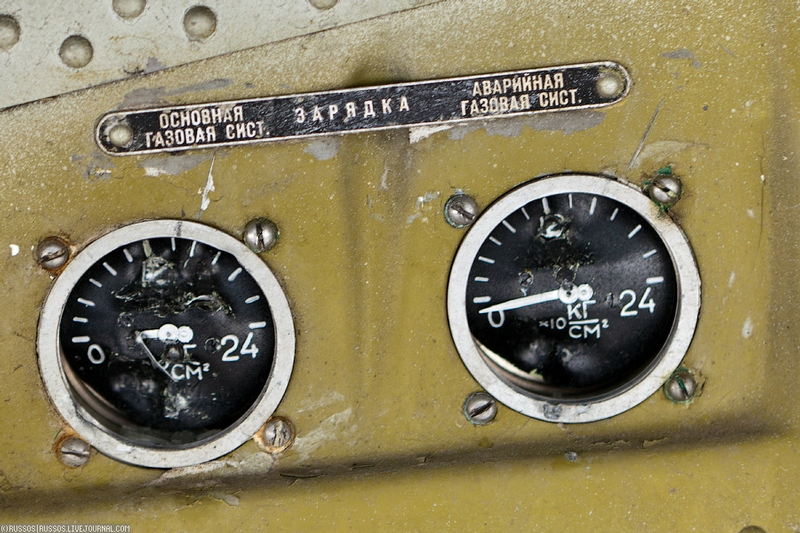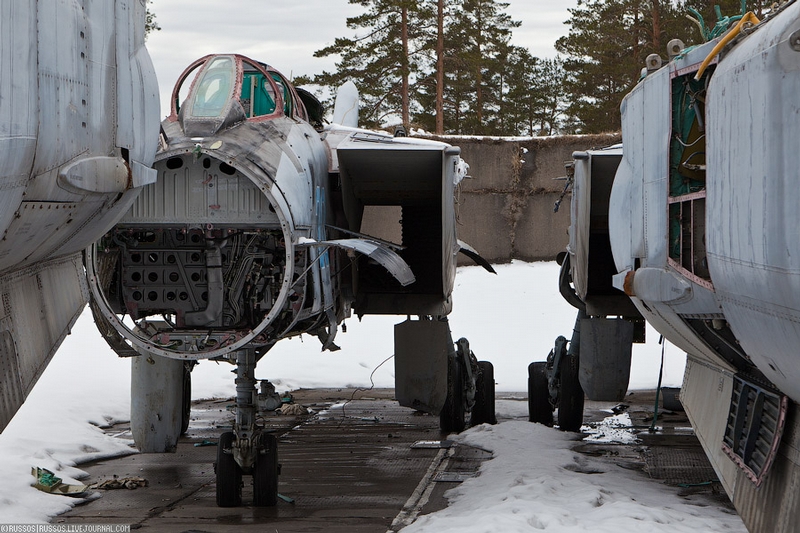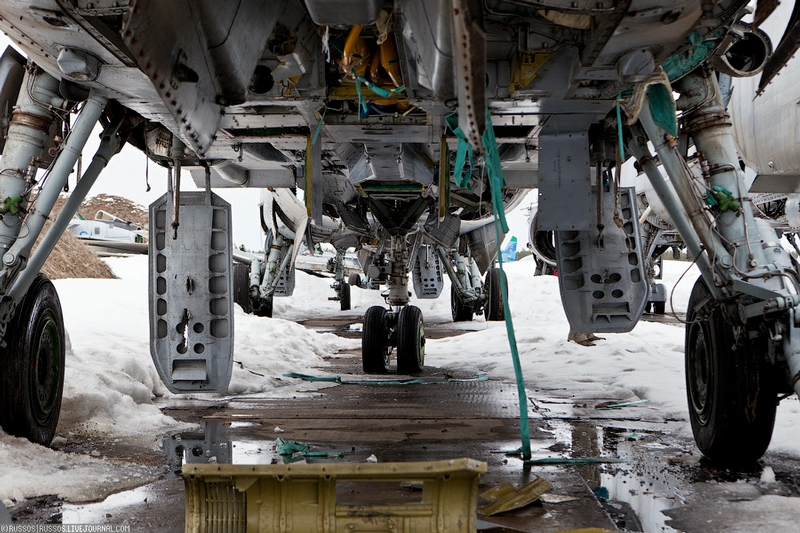Thursday, August 16, 2012
Wednesday, August 15, 2012
The Israeli Crisis
By George Friedman
Crises are normally short, sharp and intense affairs. Israel's predicament has developed on a different time frame, is more diffuse than most crises and has not reached a decisive and intense moment. But it is still a crisis. It is not a crisis solely about Iran, although the Israeli government focuses on that issue. Rather, it is over Israel's strategic reality since 1978, when it signed the Camp David accords with Egypt.
Perhaps the deepest aspect of the crisis is that Israel has no internal consensus on whether it is in fact a crisis, or if so, what the crisis is about. The Israeli government speaks of an existential threat from Iranian nuclear weapons. I would argue that the existential threat is broader and deeper, part of it very new, and part of it embedded in the founding of Israel.
Israel now finds itself in a long-term crisis in which it is struggling to develop a strategy and foreign policy to deal with a new reality. This is causing substantial internal stress, since the domestic consensus on Israeli policy is fragmenting at the same time that the strategic reality is shifting. Though this happens periodically to nations, Israel sees itself in a weak position in the long run due to its size and population, despite its current military superiority. More precisely, it sees the evolution of events over time potentially undermining that military reality, and it therefore feels pressured to act to preserve it. How to preserve its superiority in the context of the emerging strategic reality is the core of the Israeli crisis.
Egypt
Since 1978, Israel's strategic reality had been that it faced no threat of a full peripheral war. After Camp David, the buffer of the Sinai Peninsula separated Egypt and Israel, and Egypt had a government that did not want that arrangement to break. Israel still faced a formally hostile Syria. Syria had invaded Lebanon in 1976 to crush the Palestine Liberation Organization based there and reconsolidate its hold over Lebanon, but knew it could not attack Israel by itself. Syria remained content reaching informal understandings with Israel. Meanwhile, relatively weak and isolated Jordan depended on Israel for its national security. Lebanon alone was unstable. Israel periodically intervened there, not very successfully, but not at very high cost.
The most important of Israel's neighbors, Egypt, is now moving on an uncertain course. This weekend, new Egyptian President Mohammed Morsi removed five key leaders of the military and the Supreme Council of the Armed Forces and revoked constitutional amendments introduced by the military. There are two theories on what has happened. In the first, Morsi -- who until his election was a senior leader of the country's mainstream Islamist movement, the Muslim Brotherhood -- is actually much more powerful than the military and is acting decisively to transform the Egyptian political system. In the second, this is all part of an agreement between the military and the Muslim Brotherhood that gives Morsi the appearance of greater power while actually leaving power with the military.
On the whole, I tend to think that the second is the case. Still, it is not clear how this will evolve: The appearance of power can turn into the reality of power. Despite any sub rosa agreements between the military and Morsi, how these might play out in a year or two as the public increasingly perceives Morsi as being in charge -- limiting the military's options and cementing Morsi's power -- is unknown. In the same sense, Morsi has been supportive of security measures taken by the military against militant Islamists, as was seen in the past week's operations in the Sinai Peninsula.
The Sinai remains a buffer zone against major military forces, but not against the paramilitaries linked to radical Islamists who have increased their activities in the peninsula since the fall of former President Hosni Mubarak in February 2011. Last week, they attacked an Egyptian military post on the Gaza border, killing 16 Egyptian soldiers. This followed several attacks against Israeli border crossings. Morsi condemned the attack and ordered a large-scale military crackdown in the Sinai. Two problems could arise from this.
First, the Egyptians' ability to defeat the militant Islamists depends on redefining the Camp David accords, at least informally, to allow Egypt to deploy substantial forces there (though even this might not suffice). These additional military forces might not threaten Israel immediately, but setting a precedent for a greater Egyptian military presence in the Sinai Peninsula could eventually lead to a threat.
This would be particularly true if Morsi and the Muslim Brotherhood impose their will on the Egyptian military. If we take Morsi at face value as a moderate, the question becomes who will succeed him. The Muslim Brotherhood is clearly ascendant, and the possibility that a secular democracy would emerge from the Egyptian uprising is unlikely. It is also clear that the Muslim Brotherhood is a movement with many competing factions. And it is clear from the elections that the Muslim Brotherhood represents the most popular movement in Egypt and that no one can predict how it will evolve or which factions will dominate and what new tendencies will arise. Egypt in the coming years will not resemble Egypt of the past generation, and that means that the Israeli calculus for what will happen on its southern front will need to take Hamas in Gaza into account and perhaps an Islamist Egypt prepared to ally with Hamas.
Syria and Lebanon
A similar situation exists in Syria. The secular and militarist regime of the al Assad family is in serious trouble. As mentioned, the Israelis had a working relationship with the Syrians going back to the Syrian invasion of Lebanon against the Palestine Liberation Organization in 1976. It was not a warm relationship, but it was predictable, particularly in the 1990s: Israel allowed Syria a free hand in Lebanon in exchange for Damascus limiting Hezbollah's actions.
Lebanon was not exactly stable, but its instability hewed to a predictable framework. That understanding broke down when the United States seized an opportunity to force Syria to retreat from Lebanon in 2006 following the 2005 assassination of Lebanese Prime Minister Rafik al-Hariri. The United States used the Cedar Revolution that rose up in defiance of Damascus to retaliate against Syria for allowing al Qaeda to send jihadists into Iraq from Syria.
This didn't spark the current unrest in Syria, which appears to involve a loose coalition of Sunnis including elements of the Muslim Brotherhood and other Islamists. Though Israel far preferred Syrian President Bashar al Assad to them, al Assad himself was shifting his behavior. The more pressure he came under, the more he became dependent on Iran. Israel began facing the unpleasant prospect of a Sunni Islamist government emerging or a government heavily dependent on Iran. Neither outcome appealed to Israel, and neither outcome was in Israel's control.
Just as dangerous to Israel would be the Lebanonization of Syria. Syria and Lebanon are linked in many ways, though Lebanon's political order was completely different and Syria could serve as a stabilizing force for it. There is now a reasonable probability that Syria will become like Lebanon, namely, a highly fragmented country divided along religious and ethnic lines at war with itself. Israel's best outcome would be for the West to succeed in preserving Syria's secular military regime without al Assad. But it is unclear how long a Western-backed regime resting on the structure of al Assad's Syria would survive. Even the best outcome has its own danger. And while Lebanon itself has been reasonably stable in recent years, when Syria catches a cold, Lebanon gets pneumonia. Israel thus faces the prospect of declining security to its north.
The U.S. Role and Israel's Strategic Lockdown
It is important to take into account the American role in this, because ultimately Israel's national security -- particularly if its strategic environment deteriorates -- rests on the United States. For the United States, the current situation is a strategic triumph. Iran had been extending its power westward, through Iraq and into Syria. This represented a new force in the region that directly challenged American interests. Where Israel originally had an interest in seeing al Assad survive, the United States did not. Washington's primary interest lay in blocking Iran and keeping it from posing a threat to the Arabian Peninsula. The United States saw Syria, particularly after the uprising, as an Iranian puppet. While the United States was delighted to see Iran face a reversal in Syria, Israel was much more ambivalent about that outcome.
The Israelis are always opposed to the rising regional force. When that was Egyptian leader Gamal Abdel Nasser, they focused on Nasser. When it was al Qaeda and its sympathizers, they focused on al Qaeda. When it was Iran, they focused on Tehran. But simple opposition to a regional tendency is no longer a sufficient basis for Israeli strategy. As in Syria, Israel must potentially oppose all tendencies, where the United States can back one. That leaves Israeli policy incoherent. Lacking the power to impose a reality on Syria, the best Israel can do is play the balance of power. When its choice is between a pro-Iranian power and a Sunni Islamist power, it can no longer play the balance of power. Since it lacks the power to impose a reality, it winds up in a strategic lockdown.
Israel's ability to influence events on its borders was never great, but events taking place in bordering countries are now completely beyond its control. While Israeli policy has historically focused on the main threat, using the balance of power to stabilize the situation and ultimately on the decisive use of military force, it is no longer possible to identify the main threat. There are threats in all of its neighbors, including Jordan (where the kingdom's branch of the Muslim Brotherhood is growing in influence while the Hashemite monarchy is reviving relations with Hamas). This means using the balance of power within these countries to create secure frontiers is no longer an option. It is not clear there is a faction for Israel to support or a balance that can be achieved. Finally, the problem is political rather than military. The ability to impose a political solution is not available.
Against the backdrop, any serious negotiations with the Palestinians are impossible. First, the Palestinians are divided. Second, they are watching carefully what happens in Egypt and Syria since this might provide new political opportunities. Finally, depending on what happens in neighboring countries, any agreement Israel might reach with the Palestinians could turn into a nightmare.
The occupation therefore continues, with the Palestinians holding the initiative. Unrest begins when they want it to begin and takes the form they want it to have within the limits of their resources. The Israelis are in a responsive mode. They can't eradicate the Palestinian threat. Extensive combat in Gaza, for example, has both political consequences and military limits. Occupying Gaza is easy; pacifying Gaza is not.
Israel's Military and Domestic Political Challenges
The crisis the Israelis face is that their levers of power, the open and covert relationships they had, and their military force are not up to the task of effectively shaping their immediate environment. They have lost the strategic initiative, and the type of power they possess will not prove decisive in dealing with their strategic issues. They no longer are operating at the extremes of power, but in a complex sphere not amenable to military solutions.
Israel's strong suit is conventional military force. It can't fully understand or control the forces at work on its borders, but it can understand the Iranian nuclear threat. This leads it to focus on the sort of conventional conflict they excel at, or at least used to excel at. The 2006 war with Hezbollah was quite conventional, but Israel was not prepared for an infantry war. The Israelis instead chose to deal with Lebanon via an air campaign, but that failed to achieve their political ends.
The Israelis want to redefine the game to something they can win, which is why their attention is drawn to the Iranian nuclear program. Of all their options in the region, a strike against Iran's nuclear facilities apparently plays to their strengths. Two things make such a move attractive. The first is that eliminating Iran's nuclear capability is desirable for Israel. The nuclear threat is so devastating that no matter how realistic the threat is, removing it is desirable.
Second, it would allow Israel to demonstrate the relevance of its power in the region. It has been a while since Israel has had a significant, large-scale military victory. The 1980s invasion of Lebanon didn't end well; the 2006 war was a stalemate; and while Israel may have achieved its military goals in the 2008 invasion of Gaza, that conflict was a political setback. Israel is still taken seriously in the regional psychology, but the sense of inevitability Israel enjoyed after 1967 is tattered. A victory on the order of destroying Iranian weapons would reinforce Israel's relevance.
It is, of course, not clear that the Israelis intend to launch such an attack. And it is not clear that such an attack would succeed. It is also not clear that the Iranian counter at the Strait of Hormuz wouldn't leave Israel in a difficult political situation, and above all it is not clear that Egyptian and Syrian factions would even be impressed by the attacks enough to change their behavior.
Israel also has a domestic problem, a crisis of confidence. Many military and intelligence leaders oppose an attack on Iran. Part of their opposition is rooted in calculation. Part of it is rooted in a series of less-than-successful military operations that have shaken their confidence in the military option. They are afraid both of failure and of the irrelevance of the attack on the strategic issues confronting Israel.
Political inertia can be seen among Israeli policymakers. Prime Minister Benjamin Netanyahu tried to form a coalition with the centrist Kadima Party, but that fell apart over the parochial Israeli issue of whether Orthodox Jews should be drafted. Rather than rising to the level of a strategic dialogue, the secularist constituency of Kadima confronted the religious constituencies of the Likud coalition and failed to create a government able to devise a platform for decisive action.
This is Israel's crisis. It is not a sudden, life-threatening problem but instead is the product of unraveling regional strategies, a lack of confidence earned through failure and a political system incapable of unity on any particular course. Israel, a small country that always has used military force as its ultimate weapon, now faces a situation where the only possible use of military force -- against Iran -- is not only risky, it is not clearly linked to any of the main issues Israel faces other than the nuclear issue.
The French Third Republic was marked by a similar sense of self-regard overlaying a deep anxiety. This led to political paralysis and Paris' inability to understand the precise nature of the threat and to shape their response to it. Rather than deal with the issues at hand in the 1930s, they relied on past glories to guide them. That didn't turn out very well.
The Israeli Crisis is republished with permission of StratforRead more: The Israeli Crisis | Stratfo
Read more: The Israeli Crisis | Stratfor
Sunday, August 12, 2012
MIG-31 BONEYARD
Every plane, as well as every engine, has its own lifetime. Engine’s lifetime is measured in working hours, and airframe’s lifetime – in the number of takeoffs and landings. After the end of lifetime, an engine can be demounted and replaced by a new one, but an airframe is often disposed. Here is one of the military boneyards, where disposed MiGs are stored.









More pic at: http://englishrussia.com/2011/04/20/mig-31-boneyard/









More pic at: http://englishrussia.com/2011/04/20/mig-31-boneyard/
Thursday, August 9, 2012
Submarines for Indonesia
This article from http://www.defenseindustrydaily.com/

KRI Cakra

KRI Cakra
Indonesia sites astride one of the world’s most critical submarine chokepoints. A large share of global trade must pass through the critical Straits of Malacca, and the shallow littoral waters around the Indonesian archipelago. That makes for excellent submarine hunting grounds, but Indonesia has only 2 “Cakra Class”/ U209 submarines in its own fleet, relying instead on frigates, corvettes, and fast attack craft.
South Korea’s Daewoo, which has experience building U209s for South Korea, has been contracted for Cakra Class submarine upgrades. Even so, submarine pressure hulls have inflexible limits on their safe lifetime, due to repeated hydraulic squeezing from ascending and descending. The Indonesians have expressed serious interest in buying 3-6 replacement submarines since 2007, with French, German, Russian, South Korean, and even Turkish shipyards in the rumored mix. Other priorities shoved the sub purchase aside, but a growing economy and military interest finally revived it. South Korea was the beneficiary, but further orders may be in store…
Strategic Plans & Contending Designs
Indonesia’s Defence Strategic Plan 2024 calls for a fleet of 10 submarines. By then, its 2 Cakra Class boats are likely to be on their last safe years, if not completely decommissioned. In 2011, Indonesia bought 3 more. The question is whether and when Indonesia’s growing economy, military priorities, and cadre of trained submarine personnel and support will allow further buys.
Broadly speaking, the Indonesians could consider 3-6 potential diesel-electric powered submarine designs, from 5 different countries reported to date. The biggest technical and political question is whether Indonesia wants an Air-Independent Propulsion (AIP) addition that allows up to 3 weeks of submerged operation, at low speed. AIP makes diesel-electric submarines harder to detect, but would provoke regional concerns from its neighbors. Indonesia may even decide it prefers a conventional design that “shows the flag” on the surface more often, due to its location and need to maintain good relations.
HDW’s latest export product is the U214, with an AIP system. It is more advanced than the U209, and more expensive. Variants and related designs have been ordered by German & Italy (as the U212A), Greece, South Korea, and Turkey.
Indonesia already operated the U209/1300 variant, and one initial option was to simply buy more U209s with fully modern internal systems. That’s a cost effective option with low additional support costs, and that was Indonesia’s choice. Submarine type was not specified, but their tonnage appears to make them Chang Bogo Class stretched and modernized U209/1200s.
Either one of HDW’s sub types could be manufactured by Germany, South Korea, or Turkey. Turkey tried to play the Islamic card, and trying to get extra work for its shipyard. On the other hand, South Korea had an existing relationship with Indonesia’s submarine fleet, and could play the regional & support angles. South Korea won the initial 3-sub tender, but Turkey will be back and bidding if there’s another one.
 |
| ANDRASTA CLASS |
France’s DCNS has 3 relevant offerings. The most prominent is its Scorpene Class, which has been ordered by nearby Malaysia and by India. India is assembling its 6 submarines locally, but that has led to delays, and they would be an unproven shipyard for re-export purposes. The Scorpene can be delivered with or without AIP systems, just like its Agosta 90B predecessor that is being built for Pakistan in both configurations. To date, ordered Scorpenes have been the standard CM-2000 variant.
One unique option that DCNS could offer its its Andrasta Class pocket submarine. This small 855t design is optimized for littoral, shallow water environments like Indonesia, much like the used German U206 boats that Thailand is reportedly ordering. The Andrasta uses many Scorpene technologies, but trades shorter cruising range and 6 torpedo tubes that can only be loaded in dock, in exchange for more underwater stealth and lower cost. This would be the least regionally provocative choice, and might be the least expensive per boat, while giving Indonesia a potent threat within its home waters. The question is whether its capability set interests the Indonesians. Vietnam, with similar underwater terrain and frugal budgets, chose to buy Russian Kilo Class submarines instead. Indonesia likewise chose a full-size submarine design.
 |
| KILO CLASS |
Russia made a strong play of its own, and has begun supplying Indonesia with a variety of defense equipment in recent years. Most of those buys have been land vehicles and aircraft, but the Indonesian Navy has equipped some of its ships with long-range supersonic P800/SS-N-26 missiles.
Indonesia appreciates Russia’s prices, and lack of interference with how their equipment is used. Russia’s Kilo/ Improved Kilo Class submarines are a good technical choice for Indonesia’s environment, and popular around the world; nearby countries who operate or have ordered these subs include India, Vietnam, and China.
Lockheed Unveils New Unmanned Quad Rotor Vertical Take-Off and Landing System

Lockheed Martin Procerus Technologies’ new small vertical take-off and landing (VTOL) unmanned aircraft system gives warfighters, first responders and others in small, cluttered, urban environments an eye-in-the-sky in just minutes.
The rugged, five-pound VTOL quad rotor, dual-sensor platform features an extended hover, perch and stare capability that provides military, civil and commercial customers with aerial reconnaissance in crowded areas unreachable by fixed-wing unmanned aircraft systems. The VTOL’s gimbal mount includes electro-optical and infrared sensors and a laser illuminator to provide continuous 360-degree panning capability.
“We are leveraging years of experience in building small, innovative avionics and payload technologies to develop an affordable and efficient VTOL solution,” said Todd Titensor, senior manager of Lockheed Martin Procerus Technologies. “Our system is quiet, can operate day or night in challenging weather conditions and has longer operating time than other VTOL platforms.”
Equipped with the Lockheed Martin Procerus Technologies’ proven Kestrel 3 autopilot, the compact, lightweight VTOL can be deployed in minutes and operate for up to 40 minutes. The collapsible VTOL platform folds into a man-packable unit that requires no tools for assembly.
The VTOL system includes a wireless hand controller, which provides an easy-to-use interface for intuitive, untethered vehicle operation. For full ground control station capabilities, the Virtual Cockpit v3.0 features a user-friendly 3-D map interface, powerful mission planning tools, in-flight re-tasking and full waypoint navigation.
The VTOL also can land and gather surveillance data from a remote location and then take off and return home.
Acquired in January 2012, Lockheed Martin Procerus Technologies is the developer of the Kestrel Autopilot avionics and Virtual Cockpit system for fixed-wing and rotary aircraft. Additional products include small vertical take-off and landing platforms and OnPoint OnBoard vision systems for target tracking, stabilization, geo-location and terminal guidance applications.
Headquartered in Bethesda, Md., Lockheed Martin is a global security and aerospace company that employs about 120,000 people worldwide and is principally engaged in the research, design, development, manufacture, integration and sustainment of advanced technology systems, products and services. The corporation’s net sales for 2011 were $46.5 billion.
Read more: http://www.defencetalk.com/lockheed-unveils-new-unmanned-quad-rotor-vertical-take-off-and-landing-system-44115/#ixzz22yr2cX3v
Sunday, August 5, 2012
X-47B UCAS-D Begins Deck Handling Trials
By Graham Warwick
Source: Aerospace Daily & Defense Report

Northrop Grumman’s X-47B unmanned combat aircraft system demonstrator (UCAS-D) is about to begin ground maneuver trials at NAS Patuxtent River, Md., to evaluate deck handling procedures as it moves toward a landing on an aircraft carrier in 2013.
The X-47B made its first flight from Pax on July 29, when air vehicle (AV) 2 completed a 36-min. flight over Chesapeake Bay, reaching 7,500 ft. altitude and 180 kt. airspeed.
The two X-47Bs were trucked to Pax after completing envelope-expansion flight testing at Edwards AFB, Calif.
“In the months since AV-1 arrived at Pax, we have completed Block 1 envelope expansion, electromagnetic compatibility testing, and autonomous carrier air traffic control testing on the USS Truman using a King Air surrogate,” says Capt. Jaime Engdahl, UCAS program manager.
Last to arrive, AV-2 was used for the first flight from Pax because the tests, to demonstrate airspace integration and command-and-control functionality, could be performed with the software used to complete the airworthiness testing at Edwards.
AV-1 is being readied for carrier suitability testing with the next block of software, which is focused on allowing the aircraft to integrate with ship operations. Shore-based catapult launches and arrested landings will begin at Pax in late fall.
Within days, ground maneuver tests with AV-2 will begin on the ramp at Pax, using a wireless controller that straps to the UCAS-D deck operator’s right arm and controls thrust, nosewheel steering, brakes and tailhook.
On deck, the operator will stand directly behind the “yellow-shirt” director, facing the X-47B, and follow his signals to maneuver the unmanned aircraft onto the catapult, run up the engine, check the control surfaces and hand over control to the mission operator.
Upon landing, after the X-47B catches the wire and reduces engine power to idle, the deck operator will take over control, raise the tailhook and maneuver the aircraft off the wire.
Saturday, August 4, 2012
X-47B PHOTO

The US Navy's next-generation drone, the X-47B, on display Tuesday at the Naval Air Station in Patuxent River, Maryland.

The nose of the X-47B, which has a height of 10.4 feet.

The unmanned aircraft is 38.2 feet long.

The control display unit for the X-47B is used to guide the aircraft during aircraft carrier taxiing. It does not use the control to take off.

The wingspan of the unmanned aircraft is 62.1 feet.

Navy Rear Admiral Mathias Winter answers questions about the X-47B during a media day.

The simulated aircraft carrier flight operations room at NAS Patuxent River.
Subscribe to:
Posts (Atom)